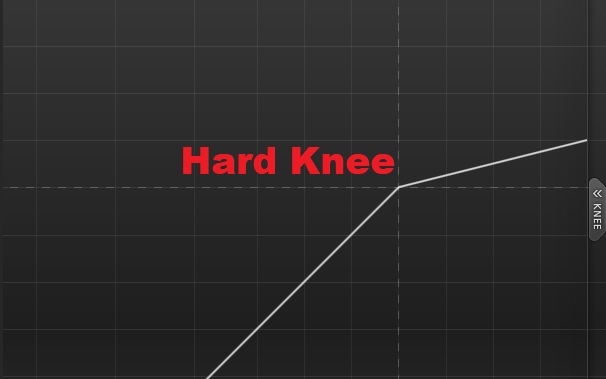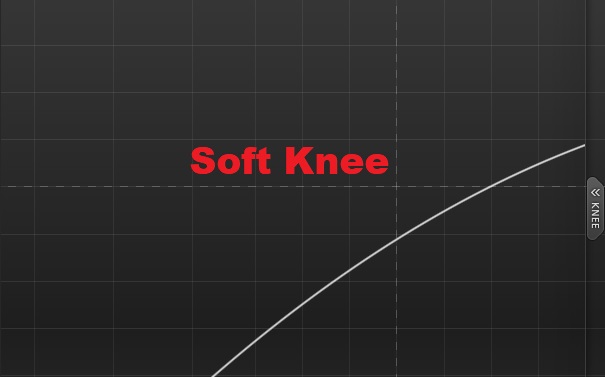If you’re interested in music production and audio engineering, you’ve probably heard the term “knee.”
A "knee" is a characteristic of a compressor that can have a significant impact on the sound of your audio.
In this post, we’ll take a closer look at what a knee is and how it affects an audio signal.
First, let's start with the basics.
What is Knee on a Compressor
When you apply compression to an audio signal, the knee determines how smoothly the compressor starts to reduce the volume once it crosses the threshold.
It controls the transition between the uncompressed and compressed states, affecting the overall sound.
By understanding and adjusting the knee settings, you can shape the dynamic range of your audio, achieving the desired results.
Depending on how you set the knee, the compression can be more noticeable or blend in seamlessly.
Imagine you have a bumpy road.
With a hard knee, it's like hitting a pothole—the transition is sudden and jarring.
But with a soft knee, it's like smoothly gliding over those bumps, allowing for a more gradual change.
This smooth transition can make the compression sound more natural and transparent.
The Difference Between a Soft and Hard Knee


A hard knee means that the compressor starts to reduce the volume abruptly as soon as the signal crosses the threshold.
This can result in a more noticeable and dramatic change in volume, which can sometimes sound unnatural.
A soft knee means that the compressor gradually begins to reduce the volume as the signal approaches the threshold, resulting in a more subtle and natural sound.
For example, let's say you're compressing a vocal track.
If you set the knee too hard, the compressor will suddenly reduce the volume of the signal as soon as it crosses the threshold.
This can result in a more controlled effect, which is perfect if you want to control loud peaks and keep the volume consistent.
On the other hand, if you set the knee to soft, the compressor will gradually begin to reduce the volume as the loud vocal parts reach the threshold, resulting in a more natural and subtle sound.
The compressor will apply the ratio gradually, as opposed to a hard knee, whereby the signal will be compressed at the same compressor ratio as soon as it crosses the threshold.
Hence most engineers will say a soft knee sounds “musical.”
It's worth noting that the knee is just one of many controls on a compressor.
Never do things by default or assume that you always have to use soft knee because it sounds musical.
The best knee compressor setting will depend on the specific sound you're going for.
So it's worth experimenting with different settings to find what works best for your audio.
Compressor Knee vs Attack
When it comes to audio compression, two of the most important controls are the knee and the attack.
While they both affect the dynamics of an audio signal, they do so in different ways.
The knee of an audio compressor refers to the way in which the compressor transitions from the uncompressed to the compressed state.
It determines how the compressor starts to reduce the volume of the signal when it exceeds a certain threshold.
On the other hand, the attack of an audio compressor refers to how quickly the compressor responds to changes in volume.
It determines how quickly the compressor begins to reduce the volume of the signal once it crosses the threshold.
A fast attack means that the compressor responds quickly to changes in volume, while a slow attack means that the compressor responds more gradually.
The knee and attack controls work together to shape the dynamics of an audio signal.
A hard knee with a fast attack will result in more aggressive compression that reduces the volume of the signal quickly and dramatically.
This can be useful for keeping the signal well-controlled without any loud peaks poking into the mix.
On the other hand, a soft knee with a slow attack will result in a more subtle compression that smooths out the dynamics of the audio signal without being too obvious.
This can be useful for creating a more transparent sound and maintaining the natural dynamic range of the audio.
Ultimately, the best approach will depend on the specific sound that you are trying to achieve.
By experimenting with different combinations of knee and attack settings, you can find the right balance between transparency and aggressiveness for your audio.
Whether you are compressing a single instrument or mastering an entire mix, understanding the relationship between the knee and attack controls is essential for achieving the desired sound.
Learn more about compression by downloading my free guide below.
Tips for Using Knee on a Compressor Effectively
- Maintain a balanced dynamic range with gentle knee settings. This is like keeping the door partially open, allowing some natural dynamics to shine through while still applying gentle compression to control peaks.
- Get creative with extreme knee settings for unique audio effects. This is like slamming the door shut for an exaggerated compression effect. Experimenting with extreme settings can add character and impact to your audio, but use it judiciously to avoid overwhelming the sound.
Adjusting the knee lets you sculpt the dynamics and shape the overall sound of your audio.
By exploring different knee types and understanding the threshold and ratio, you can unlock a world of possibilities for audio processing.
FAQ:
What is the compressor knee equation?
The compressor knee equation refers to the mathematical relationship between the input signal level and the amount of compression applied by the knee setting on a compressor.
In simple terms, it determines how the compressor reacts to the audio signal once it exceeds the threshold.
The knee equation typically involves parameters such as the knee width, threshold, and ratio.
However, there isn't a specific universal equation for the compressor knee since it varies depending on the specific compressor design and manufacturer.
Each compressor may implement its own unique algorithm to calculate the knee behavior, making it difficult to define a single equation that applies universally to all compressors.
What is the best knee for vocal compression?
The choice of the best knee setting for vocal compression depends on the specific context and the desired outcome for the vocals.
There is no one-size-fits-all answer to this question, as it heavily relies on personal preference, the characteristics of the vocal performance, and the overall mix.
However, a common approach for vocal compression is to use a soft knee setting.
A soft knee allows for more gradual and transparent compression, helping to smooth out dynamic inconsistencies without introducing noticeable artifacts.
This gentle compression can help maintain the natural dynamics and nuances of the vocal performance, resulting in a more natural and controlled sound.
However, it's important to experiment and adjust the knee setting based on the specific vocal track to achieve the desired result.
Should I use a Hard or Soft Knee for Mastering?
Whether to use a hard or soft knee when mastering audio really depends on the specific goals of the mastering process as well as the characteristics of the audio being mastered.
In general, there is no one-size-fits-all answer to this question, as the best approach will depend on a variety of factors, including the genre of music, the intended use of the audio, and the overall sound that is desired.
With that said, there are some general guidelines that can be helpful when deciding whether to use a hard or soft knee when mastering.
Here are a few things to keep in mind:
Hard knee compression tends to be more aggressive and can result in a more noticeable reduction in dynamic range.
This can be useful if you are looking to achieve a more "punchy" or "in-your-face" sound.
However, if overused, it can also result in a loss of clarity and detail.
Soft knee compression is typically more subtle, and can be useful for achieving a more transparent sound.
Soft knee compression is often used in mastering to smooth out the dynamics of a mix without being too obvious.
When mastering, it's often a good idea to use a combination of both hard and soft knee compression, as this can help you achieve a more balanced sound overall.
Some compressors give you the option to mix both hard and soft knee. These are the types of compressors you should normally use because they give you flexibility.